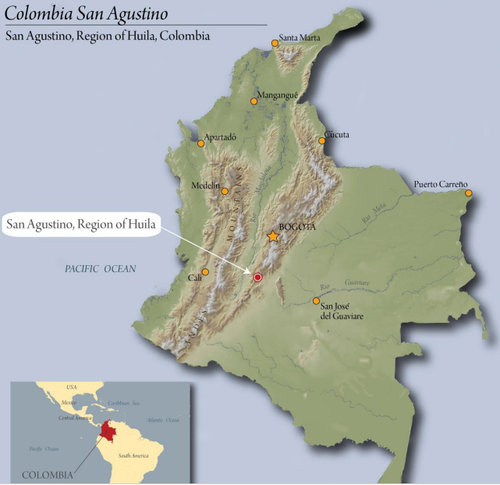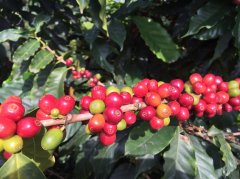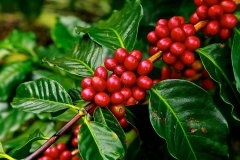How to brew Colombian coffee in St. Augustine, Huila province, Colombia

For professional baristas, please follow the coffee workshop (Wechat official account cafe_style)
Colombia is currently the third largest coffee producer in the world, originally second only to Brazil, but in recent years Vietnamese coffee, which specializes in the production of Robusta stout beans, has surpassed Colombia's status.
Colombia first planted so-called commercial beans in the mid-1830s, and coffee beans accounted for the largest share of export crops in the 20th century. The local mountainous terrain, coupled with a variety of tropical microclimate, provided an ideal coffee growing environment. 75% of the total coffee bean production is sold abroad, making it the main source of foreign exchange earnings in Colombia. Traditionally ripe coffee cherries are treated with water. Colombia's Coffee Research Center has developed a system to protect the ecological environment in the past 15 years, which requires little water to treat coffee, which can reduce water pollution by 90% and reduce water consumption by 95%. This treatment can not only effectively maintain the ecology, but also improve the quality of coffee. So farmers on small farms in Colombia sprinkle shelled coffee beans on the flat roof of their homes to dry in the sun. Colombia has a large temperature difference, and coffee can be grown and produced almost all the year round. The main harvest time is from October of each year to February of the following year, and November and December are harvest periods.
Huila Ulla province is located in western Colombia. Coffee grows on the slopes of the canyons between the eastern and western mountains, which has always been the big barn of good coffee in Colombia, of which the town of St. Augustine (San Augustin) has the best quality because of the Los Nalanjos River (Los Naranjos).
St. Augustine (San Agustin) is located in the southwest of Colombia and is a traditional good producing area. In recent years, Colombia attaches great importance to water resources and avoids the use of coffee beans as much as possible, which is similar to the honey treatment in Central America.
Coffee is exposed to the sun with a shell. during this period, the beans will be stirred from time to time, causing some shell peeling, and the shell will not be removed, polished and polished until it is shipped.
Important Notice :
前街咖啡 FrontStreet Coffee has moved to new addredd:
FrontStreet Coffee Address: 315,Donghua East Road,GuangZhou
Tel:020 38364473
- Prev

The species form, producing area quality and unique flavor of Colombian coffee
For the exchange of professional baristas, please follow the coffee workshop (Wechat official account cafe_style) Columbia Coffee introduction Open Classification: product Coffee National Cultural Beverage Colombian Coffee (Cafe de Colombia) is produced in Colombia and is one of the few individual coffees sold in the world under the name of the country. In terms of quality, it has won praise unmatched by other coffee.
- Next

African Fine Coffee Association (AFCA) third Runner-up Ethiopia Lim G1 Solar Micro batch
For the exchange of professional baristas, please follow the Coffee Workshop (Wechat cafe_style) 2016 African Fine Coffee Association (AFCA) second Runner-up Ethiopia Ethiopia Natural Limu G1 2016 AFCA 3rd grade) producing areas: Limu varieties: Heirloom (local native species) producers: local coffee farmers in Limu producing areas
Related
- Detailed explanation of Jadeite planting Land in Panamanian Jadeite Manor introduction to the grading system of Jadeite competitive bidding, Red bid, Green bid and Rose Summer
- Story of Coffee planting in Brenka region of Costa Rica Stonehenge Manor anaerobic heavy honey treatment of flavor mouth
- What's on the barrel of Blue Mountain Coffee beans?
- Can American coffee also pull flowers? How to use hot American style to pull out a good-looking pattern?
- Can you make a cold extract with coffee beans? What is the right proportion for cold-extracted coffee formula?
- Indonesian PWN Gold Mandrine Coffee Origin Features Flavor How to Chong? Mandolin coffee is American.
- A brief introduction to the flavor characteristics of Brazilian yellow bourbon coffee beans
- What is the effect of different water quality on the flavor of cold-extracted coffee? What kind of water is best for brewing coffee?
- Why do you think of Rose Summer whenever you mention Panamanian coffee?
- Introduction to the characteristics of authentic blue mountain coffee bean producing areas? What is the CIB Coffee Authority in Jamaica?

